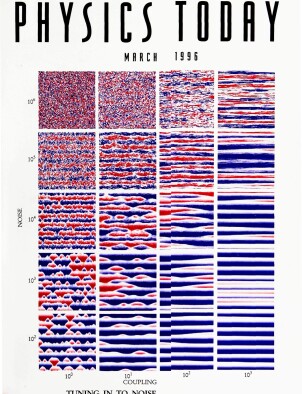Music from Oil Drums: The Acoustics of the Steel Pan
DOI: 10.1063/1.881489
The steel pan—made from the end of an oil drum—is probably the most important new acoustical (that is, nonelectronic) musical instrument developed in the 20th century. In addition to being the foremost musical instrument in its home country, Trinidad and Tobago, the steel pan is becoming increasingly popular in North America and Europe. (See figure 1). The modern family of steel pans now covers a five‐octave range, and steel bands of today use them to perform calypso, jazz, and popular and classical music.
This article is only available in PDF format
References
1. K. Roach, The Imperatives for Standardization, Trinidad and Tobago Bureau of Standards, Tunapuna (1992).
2. L. Pichary, Results of the Steel Pan Survey 90, Trinidad and Tobago Bureau of Standards, Tunapuna (1990).
3. C. Alexis, E. Mannette, personal communication.
4. U. J. Hansen, T. D. Rossing, E. Mannette, K. George, MRS Bull. 20 (3), 44 (1995).https://doi.org/MRSBEA
5. N. H. Fletcher, T. D. Rossing, The Physics of Musical Instruments, Springer‐Verlag, New York (1991). See chap. 20.
6. T. D. Rossing, D. S. Hampton, J. Boverman, “Acoustics of Caribbean Steel Drums,” paper presented at 112th meeting of ASA (1986).
7. D. S. Hampton, C. Alexis, T. D. Rossing, “Note coupling in Caribbean steel drums,” paper presented at 115th meeting of ASA (1987).
8. K. K. Leung, T. D. Rossing, “Sound spectra of Caribbean steel drums,” paper presented at Joint Annual Meeting of APS and AAPT, Arlington, Va. (1988).
9. N. H. Fletcher, J. Acoust. Soc. Am. 78, 2069 (1985).https://doi.org/JASMAN
10. A. W. Leissa, Vibrations of Plates, NASA, Washington, DC(1969).
11. M. D. Waller, Chladni Figures: A Study in Symmetry, Bell, London (1961).
12. D. S. Hampton, “Investigation of the Vibrational Modes of Steel Drums by Holographic Interferometry,” MS thesis, Northern Illinois U., De Kalb (1995).
13. T. D. Rossing, D. S. Hampton, U. J. Hanson, “Acoustics of Steelpans,” paper presented at 130th meeting of ASA (1995).
14. F. Rohner, “Empirical Steel Pan Development: Materials, Shapes and Musical Concerns”, paper presented at International Converence on Advanced Materials, Cancun, Mexico (1995).
More about the Authors
Thomas D. Rossing. Northern Illinois University.
D. Scott Hampton. Northern Illinois University.
Uwe J. Hansen. Indiana State University, NIU.




